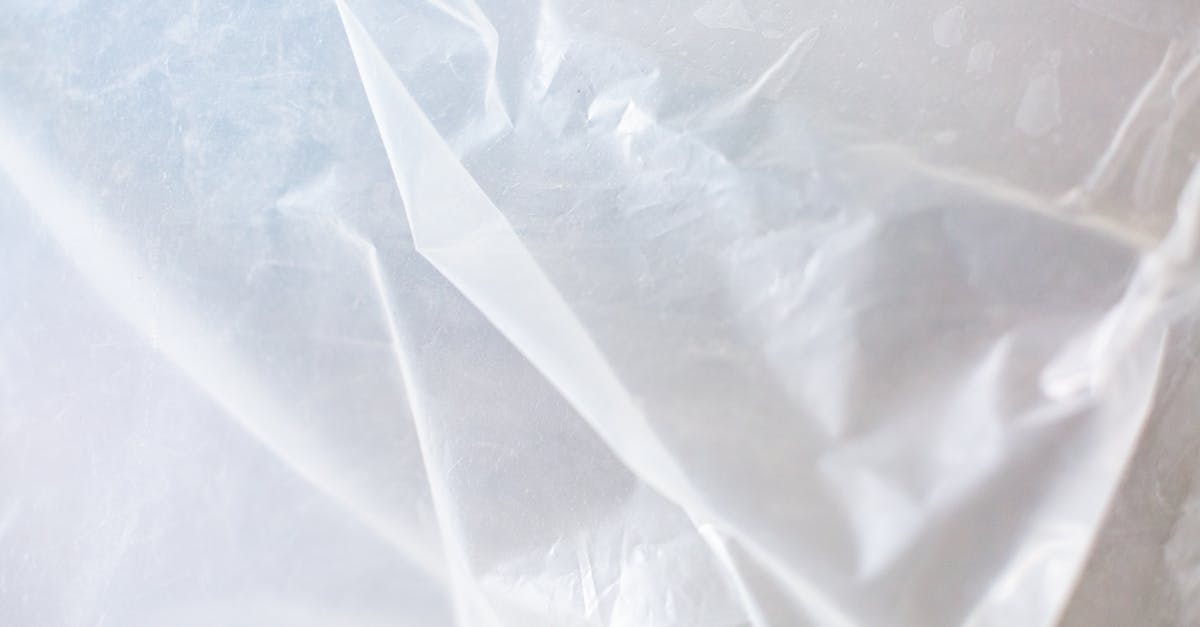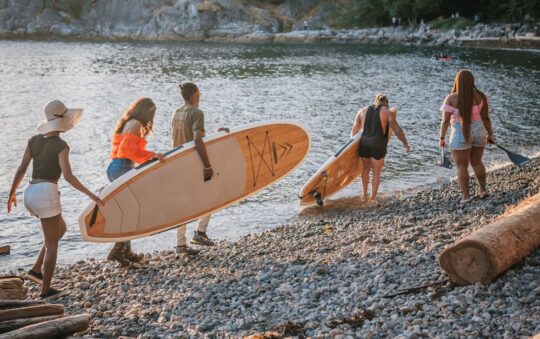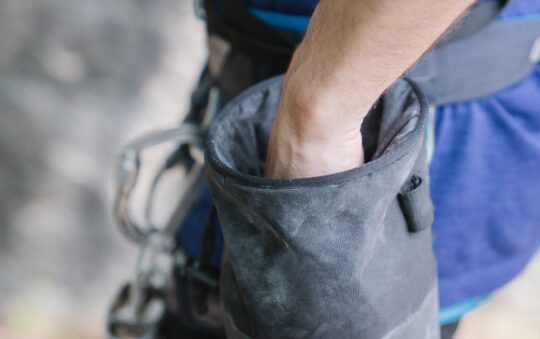Have you ever found yourself caught in a sudden downpour, wishing your shelter could hold up just a little longer? I’ve been there—feeling the cold drip of rain seep through flimsy fabric while the wind howled around me. That’s when I realized the true value of a durable tent tarp.
A reliable tarp isn’t just an extra layer; it’s your shield against nature’s surprises. In this text, I’ll jump into what makes some tarps stand out and how choosing the right one can transform your outdoor experience from stressful to seamless. Let’s discover the realm of durable tent tarps and uncover what they bring to your next adventure.
Features of Durable Tent Tarps
Choosing a durable tent tarp means looking beyond just a splash of color or fancy logo. These tarps are your first line of defense against unpredictable weather, and knowing what to look for can make all the difference.
Material and Fabric Quality
When I pick out a tent tarp, the fabric is my first checkpoint. Most durable tarps use polyester or nylon — both are known for strength and resilience. Polyester resists stretching and doesn’t sag when wet, while nylon offers fantastic tear resistance. What really seals the deal, though, is the weave density; a tighter weave means less chance for water or wind to slip through.
Look for terms like “ripstop” — this is fabric woven with thicker threads every so often, preventing holes from spreading if punctured. My personal favorite is a ripstop nylon tarp because it balances weight and strength nicely.
Waterproof and Weather Resistance
A tarp needs to keep dry even when the sky lets loose. Waterproof coatings like polyurethane or silicone are what make this happen. Silicone coatings tend to last longer and hold up against UV rays better, which means your tarp won’t fall apart after a couple of sunbathing sessions.
But waterproof isn’t the same as water-resistant — waterproof means no water gets through, water-resistant allows some dampness. I look for a hydrostatic head rating of at least 1500mm; that number tells you how much water pressure fabric can stand before leaking. For reliable outdoor use, especially if you’re caught in a storm, this is a handy stat.
Size and Coverage Options
Not every tarp fits every tent or situation. When I set up camp, I want enough coverage to protect my gear and create a dry communal spot.
Common tarp sizes run from 6×8 feet for smaller tents to huge 12×12 feet or more for groups. Many brands offer rectangular, square, or even hexagonal shapes. Hexagonal tarps sometimes provide better wind protection, but rectangular ones are easier to pitch with classic stakes.
Pro tip: Choose a tarp slightly bigger than your tent’s footprint so you can pitch it at an angle, creating runoff for rain instead of puddles.
Weight and Portability
Whether you’re car camping or backpacking, weight matters. A heavy tarp is a pain to haul, but ultra-light versions usually sacrifice durability.
My go-to durable tarp usually weighs around 8 to 10 ounces per square yard, striking a good balance. Many durable tarps pack down to the size of a water bottle, fitting easily into my hiking pack.
If you’re looking for a tarp to carry on long hikes, weigh your priorities between weight and toughness carefully. A sturdy tarp that saves your gear in a storm is worth a couple extra ounces.
UV Protection
The sun can silently damage even the toughest tarps. UV degradation means tearing fibers and faded colors. Many durable tarps offer UV-resistant coatings or UV-stabilized fabric to fight this.
I like tarps listing a UPF (Ultraviolet Protection Factor) rating — it’s a number showing how much UV light the fabric blocks. A UPF 50 rating means 98% of UV rays are blocked, protecting your tarp from sun damage and giving you shade.
Here’s a quick rundown of what I check for with UV protection:
- Coating type — silicone and acrylic coatings offer solid protection
- Fabric color — darker colors usually block UV better but may absorb heat
- Washing tips — rinsing dirt off helps maintain UV resistance over time
Choosing a tarp that stands up to sun and storms means fewer surprises on your trips and more time outdoors enjoying yourself.
Performance and User Experience
When it comes to durable tent tarps, how they perform and feel during use can make or break your outdoor experience. Here’s a closer look at what you can expect in everyday use.
Ease of Setup and Use
Setting up a tarp shouldn’t feel like a workout on its own. The best durable tarps I’ve tested come with reinforced grommets spaced just right to keep things smooth. These little metal rings let you tie down the tarp quickly without worrying about fabric tearing. Bonus points if the tarp includes extra guy lines or easy-to-follow setup instructions—especially if you’re new to camping.
Here’s what makes setup painless:
- Lightweight materials that don’t weigh you down on hikes
- Clear, strong attachment points in the right spots
- User-friendly designs that fit over or under your tent effortlessly
I remember one trip when rain started moments after I pitched my tarp. Because of those smart setup features, I had shelter in no time (which really saved me when I forgot my entire afternoon plan).
Durability in Different Weather Conditions
I’ve put durable tarps through wind, rain, sun, and even dust storms. A tarp’s true test is how well it holds up after getting soaked or baked in the sun. Tarps made from tear-resistant polyester or nylon, with a hydrostatic head rating around 1500mm or higher, stand up well to heavy rain. That rating number basically means the tarp can handle a steady amount of water pressure without leaking.
In sun-soaked conditions, UV-resistant coatings and thick fabric help prevent fading and brittle patches. The tarps that balance waterproofing with breathability keep moisture from pooling underneath while still providing solid protection.
Based on my experience:
- Look for a tarp’s weather rating to gauge waterproof strength
- Check if the tarp’s fabric has UV inhibitors to avoid sun damage
- Reinforced edges and sturdy stitching prevent rips on windy days
Maintenance and Cleaning
If you think a tarp will just fade away in your gear pile keep thinking. Proper care keeps your tarp ready for the next adventure. I keep a simple toolkit of soft brushes and mild soap nearby to wash off dirt, pollen, and any bug residue. Avoid harsh detergents that can strip waterproof coatings.
Here’s my go-to maintenance routine:
- Clean after every few uses, especially if it’s been wet or dusty
- Let the tarp air dry completely before folding to prevent mold
- Store in a cool dry place away from direct sunlight
Treating your tarp with a spray-on waterproofing agent once or twice a year helps maintain that protective layer. Tarps are pretty forgiving but a bit of upkeep extends their reliable performance significantly.
A clean and well-maintained tarp feels lighter to pack and sets up just as smoothly as the first time. On top of that, good maintenance means fewer surprises when storm clouds roll in—and believe me, that peace of mind is priceless.
Pros of Durable Tent Tarps
Durable tent tarps bring a lot to the table for anyone spending time outdoors. I’ve found that these trusty companions are more than just extra fabric—they’re genuine peace of mind. Here’s what stands out the most about using a sturdy tarp:
Reliable Weather Protection
One of the biggest perks is how well they shield you from unexpected showers and wind gusts. A tarp with a high waterproof rating (think 1500mm or more) keeps rain from sneaking in, which means no soggy gear or cold nights. I remember a camping trip where my tarp kept me dry during a sudden storm, making a world of difference in comfort.
Extra Space and Versatility
On top of protecting your tent, a roomy tarp offers extra sheltered space for cooking or hanging out. It’s like adding a little outdoor living room right next to your tent. The best part is how easy it is to set up in various configurations depending on your needs. This flexibility really paid off when a friend showed up last minute and we needed a spot for gear.
Long-Lasting Durability
These tarps are built to take some punishment. Strong fabrics like ripstop nylon or polyester handle tears and abrasions way better than your average plastic sheet. Plus, UV-resistant coatings prevent sun damage over time, so they don’t turn brittle after just a few uses. I’ve had tarps lasting multiple seasons without giving out—definitely a solid investment for regular campers.
Lightweight and Portable
A quality tarp strikes a nice balance between toughness and weight. You can lug it around easily on a hike without feeling bogged down. Some models fold up small enough to stash inside a backpack pocket. That portability means you’ll be more likely to actually bring it along, which I think is half the battle when prepping for trips.
Cost-Effective Protection
While the price tag can vary, a durable tarp typically offers more bang for your buck compared to specialized rain flies or full canopies. It does several jobs at once which can save you money and reduce packing clutter. In my experience, it’s a smart way to cover a lot of camping bases without very costly.
Quick Tips for Choosing a Durable Tarp:
- Look for waterproof ratings above 1500mm for dependable rain protection
- Opt for ripstop fabrics to prevent small tears from turning into big problems
- Check for reinforced grommets and strong tie-out points for easier setup
- Pick a tarp size slightly bigger than your tent for full coverage and runoff
- Consider a tarp with a UV-resistant coating to extend its lifespan
If you’re the type who likes to keep gear simple but tough, a durable tent tarp will end up being your best outdoor sidekick.
Cons of Durable Tent Tarps
While durable tent tarps have plenty of perks, they do come with a few quirks that might make you think twice before grabbing the first one you see.
Heavier Than Lightweight Alternatives
Durability usually means using tougher, thicker materials. That extra strength often adds weight. For campers like me who trek miles with their gear, every ounce counts. So, if you’re into ultralight backpacking, a heavy-duty tarp can feel like dead weight dragging you down the trail. On the plus side, some high-quality tarps strike a nice balance, but expect to pay more for those lighter, durable options.
Bulkier to Pack and Store
Because thick fabrics are less flexible, they don’t compress as much. This means your tarp might hog valuable space in your pack or storage spot. If your backpack already feels stuffed, squeezing in a bulky tarp could be a struggle. My advice: fold it carefully and consider using a compression sack to save some space.
Higher Cost
Getting a tarp that can withstand serious weather usually means spending more. Durable fabrics with features like reinforced corners and premium waterproof coatings come at a price. For casual campers or those on a budget, this might feel like a stretch. Still, think about the long-term savings from avoiding replacements after just one season of wear and tear.
Setup Can Be Tricky for Beginners
Some of the sturdier tarps come with multiple attachment points to customize your shelter. It’s awesome for flexibility but can be confusing if you’re new to this. I remember fumbling with my first tarp, trying to decide where to stake it down during a sudden rainstorm. Practice at home, or watch some quick tutorials before you hit the trail—that little bit of prep saves headaches later.
Overkill for Mild Weather and Short Trips
If you’re heading out for a quick day hike or expecting mostly clear skies, a durable tarp might be more than you need. Its toughness is fantastic during storms but could feel like bringing a sledgehammer to crack a nut. I learned this the hard way—carrying a heavy tarp for a weekend of sunshine just wasn’t worth it.
Quick Tips to Balance These Drawbacks
- Pick a tarp size just big enough to cover your tent plus a little extra; avoid oversizing to save weight and space.
- Look for materials like ripstop nylon that offer strength without turning your pack into a brick.
- Test your tarp setup at home so you’re confident when the weather turns.
- Consider your camping style: if you rarely face harsh conditions, a moderate tarp might do the trick.
Taking these factors into account helps you enjoy the benefits of a durable tarp without the common downsides getting in your way.
Comparison With Other Tent Tarps
Choosing the right tent tarp can feel like a balancing act. You want something tough that stands up to the elements but also fits your budget and style of camping. That said, looking at how durable tarps stack up against other options can help clear things up.
Price Comparison
When I first started shopping for tarps, the price differences caught me off guard. Durable tent tarps often come with a higher upfront cost compared to basic or lightweight models. Here’s a quick look at typical price ranges:
| Tarp Type | Price Range | What You’re Getting |
|---|---|---|
| Basic Lightweight | $15 – $40 | Simple materials, less weather resistance |
| Mid-Range Durable | $40 – $80 | Stronger materials, better waterproofing |
| Premium Heavy-Duty | $80 – $150+ | Top materials, reinforced corners, UV protection |
Still, think of durable tarps as an investment in peace of mind. I once had a cheap tarp fail mid-rainstorm (picture me drenched and rushing for cover). Since upgrading I’ve had nothing but solid protection, worth every penny.
Quick tip: If your trips include unpredictable weather or longer stays, lean toward the mid or premium range for fewer headaches.
Durability and Longevity
Durability, in this case, means how well the tarp holds up after repeated use—toughness against tears, fading, and water damage. Durable tarps usually feature ripstop fabrics, which have a special weave that helps prevent small rips from turning into big holes. They often have UV-resistant coatings as well to keep the sun from wearing them down.
I’ve found that tarps with reinforced grommets and double-stitched seams can take a beating without falling apart. When camping, especially during those surprise thunderstorms, that reliability is priceless.
Here’s something to keep in mind: cheaper tarps might last a season or two. Durable tarps can stick with you for years if you take good care of them (like cleaning and drying before storage). For me, this longevity beats swapping out cheap tarps seasonally.
Functionality and Versatility
It’s not just about surviving storms—how a tarp fits into your camping routine matters a lot. Durable tarps often double as sunshades, ground covers, or emergency shelters. The extra size options mean you get more coverage or create extra living space.
I’ve used mine as a sunshade on blazing hot days and as a windbreaker when the campfire smoke started storming my tent. Because they’re usually a bit heavier, they’re better suited for car camping or short hikes where weight isn’t a headache.
If lightweight is your top priority for long backpacking trips, a lighter tarp might win. But for most of us who want solid multi-use gear that doesn’t quit, durable tarps tick more boxes.
Here’s what I suggest:
- Look for tarps with multiple tie-down points for flexible setup.
- Pick sizes that give you options to adapt to different weather or campsite layouts.
- Don’t forget UV protection if you’re camping in sunny spots often—it really helps the tarp stay tough for longer.
All in all, durable tarps do more than protect—they become reliable partners on your outdoor adventures.
Testing and Hands-on Experience
Getting a tarp isn’t just about specs on paper. I took several durable tent tarps out for a spin to see how they really hold up in the wild. Here’s how they performed when put to the test in real situations and under extra pressure.
Real-World Usage Scenarios
I’ve camped in all kinds of settings—from dense forests to open fields that get hammered by sun and storms alike. The tarp’s job? Keep me dry, protected, and comfortable no matter what.
- Rainy Nights: One trip threw me a surprise downpour. A tarp with a waterproof rating above 1500mm kept the soaking off my tent completely. I didn’t have to shuffle gear or worry about leaks. Bonus: extra coverage past the tent’s edges meant water ran off well.
- Sun Protection in the Desert: On a sunny weekend, a UV-treated tarp cut down on sun exposure noticeably. The fabric stayed cool and didn’t fade or weaken, which means better protection on both short and long trips.
- Windy Ridge Tops: Setting up on a windy ridge showed just how useful reinforced grommets and strong tie points are. I never worried about tears or the tarp popping loose—even when gusts picked up unexpectedly.
- Quick Shelter: In a pinch, tarps doubled as ground covers and shade cloths. Lightweight models went up in minutes, which is a win when you want less fuss and more chill time.
Every trip confirmed one thing: size matters. I picked tarps slightly bigger than my tent for full coverage and flexibility. It’s easy to adjust for extra gear, wet boots, or even a cooking area.
If you’re after a tarp that fits into your daily adventures or weekend escapes, focusing on waterproof strength, UV resistance, and practical sizing saved me loads of headaches.
Stress and Wear Testing
I wanted to see how much these tarps could take beyond everyday use. That meant extra pulls, scrapes, and left-out-in-the-elements experiments.
- Tensile Strength Check: I gently tugged on corners and sides to mimic strong winds or heavy snowfall. Ripstop fabrics handled the stress well. They stretched a little but didn’t tear or lose shape.
- Abrasion Test: Dragging a tarp across rocks and rough ground can happen when setting up under less than perfect conditions. The thicker, coated tarps showed less wear while thinner ones started to reveal tiny frays.
- UV Exposure Over Time: Leaving some tarps out in full sunlight for days tested how well colors and coatings held up. Those with built-in UV blockers stayed solid without becoming brittle or faded.
- Waterproof Durability: After repeated wet-dry cycles (think river crossings or rainy camps), the waterproof coating held steady on premium tarps. Lower-end models absorbed water eventually, showing the limits of cheaper fabric treatments.
Here’s a quick overview of what the tests showed me:
| Test Type | Tarps with Ripstop Nylon or Polyester | Lightweight Mesh or Basic Tarps |
|---|---|---|
| Tensile Strength | High resistance without tearing | Light stretch, risk of small splits |
| Abrasion Resistance | Minimal wear after rough use | Visible fraying and fabric weakening |
| UV Protection | Colors and fabric hold up well | Significant fading and brittleness |
| Waterproof Quality | Maintains water repellency long-term | Water starts soaking in after hours |
If you’re using your tarp regularly, especially off the beaten path, opting for materials rated for high durability will save you from gear failures. It doesn’t mean you need the heaviest tarp, but knowing the limits helps choose a tarp that lasts.
Pro tip: Always try a practice setup at home (yes, it’s worth the muscle memory). It makes a difference if you need to pitch quickly in bad weather. Plus, checking all zippers, grommets, and fabric lets you catch any issues before they become trip spoilers.
Alternatives to Durable Tent Tarps
While durable tent tarps are fantastic for tough outdoor conditions, sometimes you might want to consider other options depending on your trip, budget, or packing style. Here’s a quick look at some alternatives I’ve come across that can fit different needs without sacrificing too much protection or convenience.
Lightweight Polyethylene Tarps: Budget-Friendly and Practical
If you’re just starting out or planning a quick weekend trip, lightweight polyethylene tarps can be a solid choice. They’re the kind you see at hardware stores—and yes, they do the job when you need basic shelter from rain or sun.
- Pros: Very affordable, super light to carry, and easy to find.
- Cons: Tend to tear faster and don’t usually have reinforced edges or grommets, so setup can be trickier.
- A handy tip: Use duct tape to fix small tears on the trail. (It saved me once during an unexpected afternoon downpour.)
I’ve noticed that polyethylene tarps work well if you’re camping in mild weather or using them just to throw over picnic spots or gear.
Waterproof Rain Flys: Perfect Match for Your Tent
Rain flys are specifically made to fit tents and offer that extra waterproof shield over the tent fabric. They usually match your tent’s size and shape, making setup straightforward.
- What I liked: They’re custom-fit so no guessing about tarp size, and many come with easy snap-on or buckle attachments.
- Heads-up: Not as versatile for extra ground cover or gear shelter because of their specific shape.
Fun fact: Using a rain fly can actually keep your tent ventilation better while you stay dry, meaning less condensation inside.
Canopy Shades: Sun Protection with Open Airflow
Ever feel like you just want a chill shaded spot without trapping heat? Canopy shades or pop-up shelters are fantastic for sunny days when rain isn’t a big concern.
- Best use: Group camping, picnics, or when you want an open hangout area.
- Downside: They don’t block wind or rain as effectively, so not the best storm companions.
- Bonus: Some models have UV protection built into the fabric, helping prevent sunburns and equipment fading.
Natural Shelter Alternatives: Blending with the Outdoors
In some situations, especially in forested or wooded areas, I’ve found that using natural features like fallen trees or setting up between large boulders can provide decent cover when tarps aren’t an option.
- This is more of a last resort but great for lightweight backpackers who want to cut down gear and enjoy the environment.
Quick Comparison at a Glance
| Alternative | Weight | Weather Protection | Durability | Setup Ease | Best For |
|---|---|---|---|---|---|
| Durable Tent Tarps | Medium to Heavy | Excellent (waterproof + UV) | High (ripstop fabric) | Moderate | All-weather camping |
| Polyethylene Tarps | Very Light | Basic (water-resistant) | Low (prone to tears) | Easy but fragile | Budget or casual camping |
| Tent Rain Flys | Light | Very good (custom fit) | Medium | Very easy | Tent owners needing rain cover |
| Canopy Shades | Medium | Limited (sun + slight rain) | Medium | Easy | Sun protection, social setups |
| Natural Shelter | None | Depends on environment | N/A | Dependent on site | Minimalist, eco-friendly trips |
Final Thoughts on Choosing Alternatives
Every camping trip is different so picking the right shelter piece depends on your priorities.
- If you want peace of mind and long-term use, go durable.
- If you just need something light and cheap, polyethylene tarps work.
- For matching your tent perfectly, rain flys keep things clean and simple.
And, if you’re anything like me, having a backup tarp or two in the car (or stored with other gear) always comes in handy—because nature loves to surprise us when we least expect it.
Conclusion
Choosing the right durable tent tarp has made a huge difference in my outdoor adventures. It’s not just about staying dry—it’s about having peace of mind no matter what the weather throws at you. Investing in quality materials and proper maintenance ensures your tarp will last trip after trip.
Whether you’re a casual camper or a seasoned backpacker, a reliable tarp adds versatility and protection without too much extra weight. It’s a small gear upgrade that pays off in comfort and convenience every time I head outdoors.
Frequently Asked Questions
What makes a tent tarp durable?
Durability in tent tarps comes from strong materials like ripstop polyester or nylon, waterproof coatings with a hydrostatic head of at least 1500mm, reinforced grommets, and UV-resistant treatments. These features help the tarp withstand rain, wind, tears, and sun damage.
Why is waterproof rating important for a tarp?
Waterproof rating, measured in millimeters (mm), indicates how much water pressure a tarp can handle before leaking. A rating of 1500mm or higher ensures reliable protection from rain and moisture during outdoor use.
How large should a tarp be compared to my tent?
Choose a tarp slightly larger than your tent. This extra size provides better coverage, allows water runoff, and creates additional sheltered space for gear or seating.
Are durable tarps heavy and bulky?
Some durable tarps are heavier and bulkier due to their robust materials and coatings. However, many balance weight and strength well enough for hiking and camping without sacrificing portability.
Can a tarp protect me from the sun?
Yes, tarps with UV-resistant coatings and darker or reflective fabrics help block harmful sun rays, preventing fabric degradation and protecting campers underneath.
How do I maintain and clean a durable tent tarp?
After use, clean tarps by brushing off dirt with a soft brush and washing gently with mild soap and water. Let them dry fully before storage and consider reapplying waterproof treatments periodically.
Are durable tarps expensive?
Durable tarps often come at a higher upfront cost compared to lightweight or basic tarps. However, their longevity, reliability, and versatility make them a cost-effective investment for frequent outdoor use.
What are the downsides of using a durable tarp?
Potential downsides include added weight, bulkier packing size, higher cost, and sometimes more complicated setup for beginners. For short or mild-weather trips, lighter options may suffice.
How does a durable tarp compare with alternatives like rain flys or canopy shades?
Durable tarps offer greater versatility, durability, and protection across various weather conditions, while rain flys and canopy shades might be lighter or easier to use but less robust and versatile.
Is it necessary to practice setting up the tarp?
Yes, practicing setup at home helps familiarize you with the tarp’s features and reduces challenges during adverse weather, ensuring quick and confident installation on your trip.




